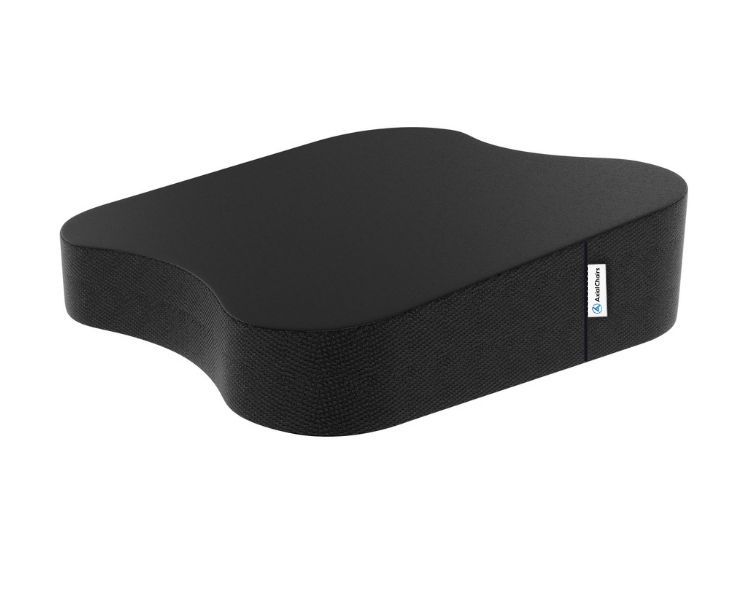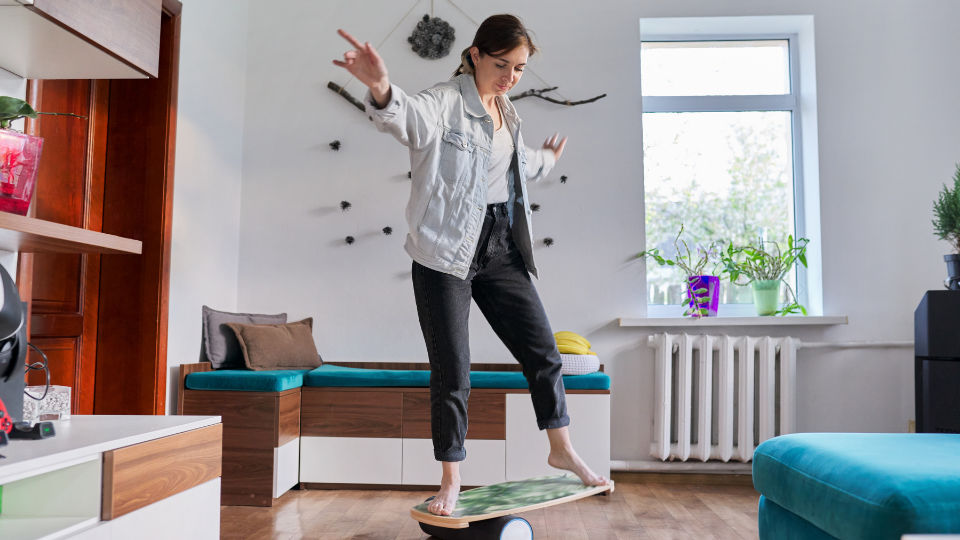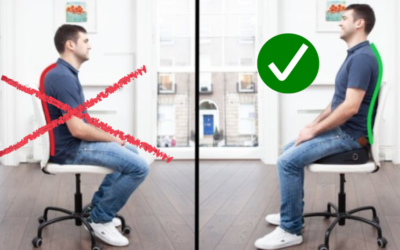When delving into the complexities of posture, we often visualize the upright stance of soldiers or the poised elegance of a dancer. Yet, posture’s significance stretches far beyond these examples, extending to each one of us in our day-to-day activities. A fundamental aspect of this is not just how we stand, but how we sit. By appreciating the intricacies of spinal alignment and the influence of seating on it, we can pave the way for better health and improved functionality.
As a general rule, spinal alignment is crucial for balance. When it deviates from its natural curve, the body works harder to stay upright. Especially in the vertical plane, misalignment raises fall risks, notably among the elderly. Maintaining proper spinal posture is vital to reduce these risks.
Balance issues is a common problem that affects most of us, especially the elderly. As someone who has been practicing chiropractic for over three decades and also trained as an ergonomist, I have the knowledge and experience needed to help alleviate this problem. I have written a book on posture, appeared on national TV to discuss this topic, a YouTube channel on this subject, and developed products to help people improve their posture and comfort while sitting. I even successfully crowdfunded a project to create a set of ergonomic seat cushions. I am confident that I can steer you into the right direction.
The Anatomy of Sitting and Spinal Alignment
The spine, our body’s central pillar, is categorized into three primary sections: cervical (neck), thoracic (mid-back), and lumbar (lower back). Proper alignment of these segments is the cornerstone of maintaining not only balance but overall spinal health.
A sound posture in sitting means that our spine maintains its neutral alignment: the head is poised over the shoulders, and the pelvis remains even. This configuration ensures a consistent center of gravity, central for maintaining equilibrium, especially when seated for extended periods.
The Implications of Improper Seating
An inadequate seating posture can lead to a series of negative impacts on our body. To name a few:
Head Protrusion: Caused by peering down at devices, it pushes the head forward, placing additional strain on the cervical region and altering our center of gravity.
Hunched Shoulders: This affects the thoracic spine’s alignment, causing strain and upsetting our balance.
Forward Pelvic Shift: Arising from prolonged seating or lack of core engagement, it misaligns the lumbar region.
The Ramifications Beyond balance, a deficient sitting posture over extended periods can contribute to:
- Greater susceptibility to injuries.
- Muscular tension and discomfort.
- Decreased mobility and suppleness.
- Diminished muscle endurance and strength.
- Reduced pulmonary efficiency.
- Digestive irregularities.
Elevating Your Seating Posture For those keen on enhancing their seating posture, ponder on the following:
- Consciousness: Frequently reconnect with your posture, especially during prolonged seating.
- Core Strengthening: Emphasizing the core muscles aids in preserving both posture and balance.
- Flexibility: Consistent stretching can assist in rectifying misalignments and enhancing posture.
- Optimized Seating: A seat cushion designed with insights from chiropractic principles can be a game-changer. Incorporating a high-density base foam for support, a natural latex soft top for comfort, a non-slip bottom to ensure steadiness, and a vegan leather top fabric for sustainability and hygiene can offer holistic support to your spine.
My Design: Ergonomic Seat Design for Posture Support
I designed an ergonomic seat cushion for my patients who had poor posture issues while seated. My design has been a blessing for countless people because I focused on 4 key elements in my design (spinal alignment, pressure point support, resilience, and comfort). I explain the concept of my ergonomic design on a TV show HERE.
Spinal Alignment:
All Day Comfort & Support
Proper spinal alignment is fundamental to maintaining a healthy posture. When we sit for prolonged periods, especially on surfaces that don’t offer adequate support, our spines can adopt a misaligned position. An ergonomic seat cushion, like the one offered by Axial Designs, contours to the natural curve of the lower back and pelvis. This helps to promote the natural inward curve of the lumbar spine, reducing the risk of adopting a slouched posture which can lead to imbalances over time. Such alignment is foundational not just for seated comfort but also for ensuring that our spines are in an optimal position to distribute weight and load evenly.
Pressure Point Support:
Axial Ergonomic Seat Cushion® | Seat Chair Wedge
Quick Guide: A 30-Second Summary
Sitting for extended durations can lead to pressure build-up in certain areas, notably the ischial tuberosities or “sitting bones”, and the coccyx or tailbone. Over time, this pressure can lead to discomfort and reduced blood circulation, potentially causing issues with muscle fatigue and localized pain. An ergonomic cushion provides targeted support to these pressure points, redistributing the weight evenly across the seating surface and reducing the risk of these complications.
Resilience:

All Day Comfort & Support
Product Name
Axial Designs™ Seat Cushion
Price
$149
Warranty
1 Year
Type
Posture Wedge
Top Layer
100% Natural Latex (Molded)
Bottom Layer
High-Density Foam
Top Material
Isometric Grippy Vegan Leather
Bottom Material
Non-Slip Material
Side Material
3D Breathable Fabric
The resilience of a cushion refers to its ability to return to its original shape after being compressed. A cushion that lacks resilience will become flattened over time, which reduces its effectiveness in providing the necessary support. A cushion designed with resilience in mind ensures that it maintains its shape and support even with prolonged use. This consistent support ensures that the benefits of the cushion, such as proper spinal alignment and pressure point relief, remain effective over time.
Comfort:
While spinal health and posture are paramount, comfort cannot be ignored. Discomfort, even if subtle, can cause individuals to shift and fidget, seeking a better sitting position. These constant micro-movements can result in muscle fatigue and other related discomforts. By using a natural latex ergonomic seat cushion, individuals receive the benefit of both support and comfort, allowing for prolonged seated tasks without the constant need to adjust position.
Ultimately, the use of an ergonomic seat cushion from Axial Designs can be beneficial for those looking to maintain proper spinal alignment, offer relief to pressure points, and ensure consistent resilience and comfort while sitting. Proper sitting posture and support can be a foundational step in preventing potential balance and alignment issues in the future.
Research on How Posture Effects Balance
Does bad posture affect the standing balance? (Gergely Nagymáté ORCID Icon, Mária Takács &Rita M. Kiss)
Synopsis: This study likely investigated the impact of poor posture on an individual’s ability to maintain upright standing balance. Given the journal and title, the research might have used a combination of empirical tests, bio-mechanical models, and analysis to determine how deviations from ideal postural alignments can influence balance and stability while standing.
Interrelationship between postural balance and body posture in children and adolescents (O Ludwig – Journal of physical therapy science, 2017)
Synopsis: This research explored the connection between postural balance and overall body posture in younger populations, namely children and adolescents. It probably highlighted how postural habits developed during these formative years can influence balance and, conversely, how balance challenges or deficiencies can lead to postural adjustments or maladaptations.
Effects of forward head posture on static and dynamic balance control (JH Lee – Journal of physical therapy science, 2016)
Synopsis: Forward head posture is a common postural misalignment where the head juts forward relative to the shoulders. The study likely delved into how this specific posture affects both static (standing still) and dynamic (while moving) balance control. It might have also discussed the implications for physical therapy and interventions to address this postural issue.
The perils of poor posture (K Fowler, L Kravitz – Idea Fitness Journal, 201)
Synopsis: This study likely delves into the adverse effects of maintaining poor posture over time. With the focus being on fitness, it may highlight how incorrect posture can lead to muscle imbalances, decreased athletic performance, and increased risk of injuries. The connection between poor posture and balance may be emphasized, explaining that misaligned posture can disrupt the body’s center of gravity, leading to decreased stability and an increased risk of falls.
Good positioning: the importance of posture (J Swann – Nursing And Residential Care, 2009)
Synopsis: Given the context of nursing and residential care, this article probably discusses the importance of proper posture for elderly or patients in care facilities. Poor posture in these populations can lead to a multitude of health issues, including compromised balance, which heightens the risk of falls—a major concern in elderly care. The article may provide insights into how caregivers can assist patients in maintaining correct posture to enhance their quality of life and overall health.
Specialized Guidance
If postural and balance concerns persist, consulting professionals can be invaluable. Chiropractors, with their profound knowledge of spinal mechanics, can offer bespoke advice and interventions tailored to individual requirements.
Conclusion
Though frequently overlooked in our bustling lives, the posture we maintain while sitting holds profound implications for our overall health and balance. By recognizing its importance and employing a seating solution rooted in chiropractic understanding, we can usher in a new era of spinal health and holistic well-being. After all, a supported spine is synonymous with a harmonious life.






